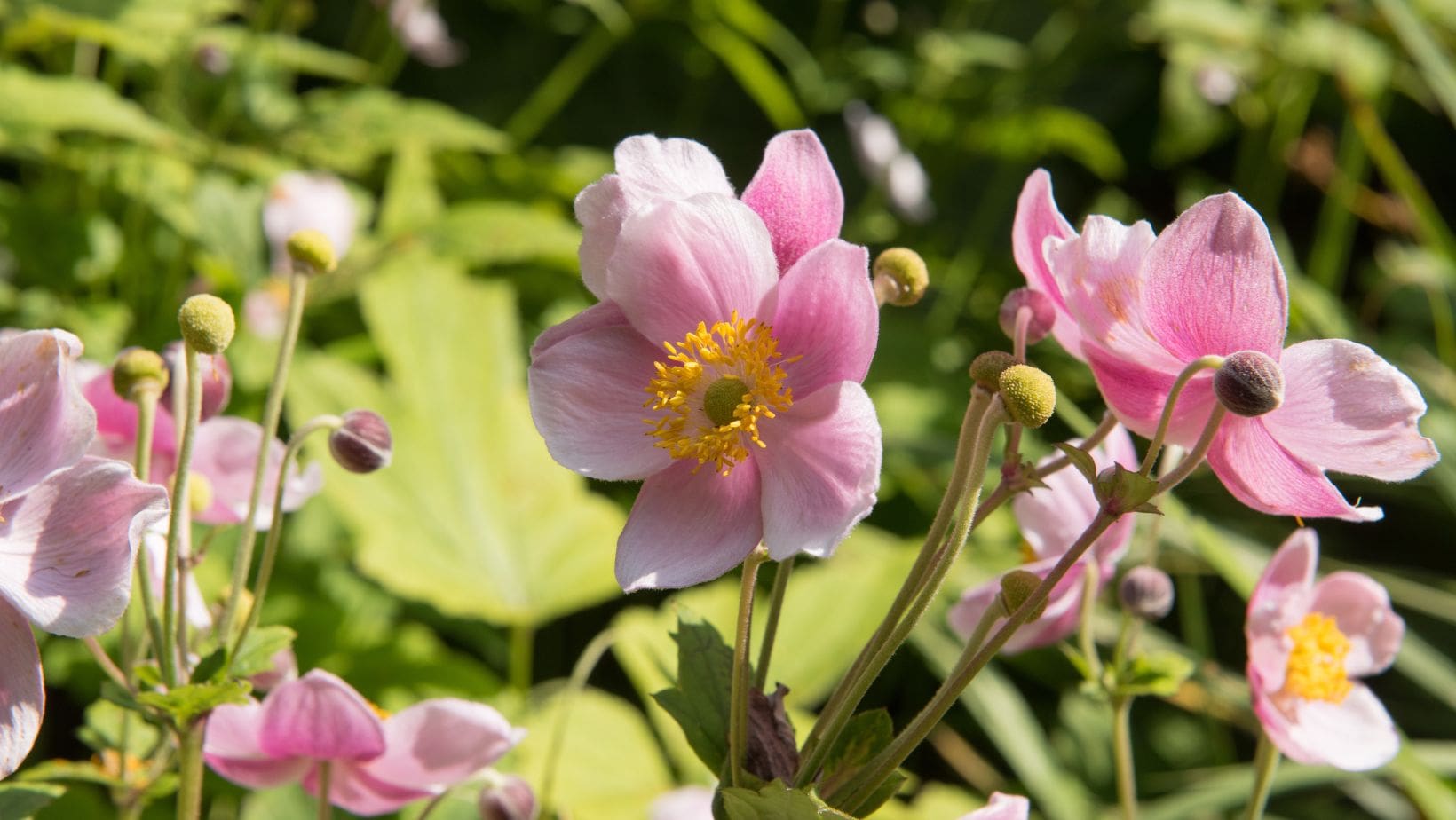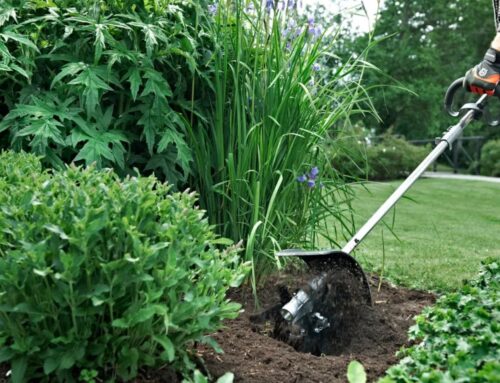
10 Things to Do Now to Prepare Your Garden for Autumn
As the days grow shorter and a golden tint creeps into the leaves, many gardeners breathe a sigh of relief. The high-maintenance days of summer are winding down—but if you want your garden to bounce back stronger next spring, don’t pack away your tools just yet. Properly preparing your garden for autumn is one of the smartest moves you can make. Not only does it protect your plants from frost, wind and rain, but it lays the early foundations for a vibrant, healthy start to the next growing season.
So, before you reach for the blankets and hot chocolate, here are 10 essential things you should be doing now to get your garden ready for autumn…
1) Clear and Compost Spent Growth
 The first step in preparing a garden for autumn is a good old tidy-up. Be sure to clear dead annuals, spent vegetable crops, fallen leaves and overgrown perennials away before they begin to rot or harbour pests. This is especially important if you’ve had issues with fungal diseases or insect infestations over the summer, as these can overwinter in plant debris and return with a vengeance next year.
The first step in preparing a garden for autumn is a good old tidy-up. Be sure to clear dead annuals, spent vegetable crops, fallen leaves and overgrown perennials away before they begin to rot or harbour pests. This is especially important if you’ve had issues with fungal diseases or insect infestations over the summer, as these can overwinter in plant debris and return with a vengeance next year.
Once cleared, consider composting as much as possible—unless the plant matter is diseased. Autumn’s wealth of organic material is perfect for starting or topping up a compost pile, which will be a valuable resource when spring arrives.
2) Prune Summer-Flowering Shrubs
 While not all shrubs benefit from late summer/ early autumn pruning, many summer-flowering varieties, like rambling roses and lavender, do. Cutting back now allows the plant to focus its energy on root development rather than seed production. Be selective though—don’t remove more than a quarter of a plant’s growth in one go.
While not all shrubs benefit from late summer/ early autumn pruning, many summer-flowering varieties, like rambling roses and lavender, do. Cutting back now allows the plant to focus its energy on root development rather than seed production. Be selective though—don’t remove more than a quarter of a plant’s growth in one go.
Use sharp secateurs and garden shears to make clean cuts just above a leaf node. For larger woody branches, loppers or pruning saws might be needed. Pruning in this way improves air circulation, reduces the risk of disease, and gives your plants a neat, well-kept appearance going into the colder months.
3) Bring Tender Plants Indoors
 Frost can strike earlier than expected, so it’s wise to move any tender or tropical plants under cover before the cold truly sets in. If you’ve got potted fuchsias or pelargoniums, you’ll need to relocate them to a greenhouse, conservatory or porch pretty soon.
Frost can strike earlier than expected, so it’s wise to move any tender or tropical plants under cover before the cold truly sets in. If you’ve got potted fuchsias or pelargoniums, you’ll need to relocate them to a greenhouse, conservatory or porch pretty soon.
Before doing so, check the soil for insects or snails, and trim away any damaged or diseased foliage. Not only does this keep your indoor environment clean, but it gives your plants the best chance of winter survival. For those that can’t be moved, consider using garden cloches or fleece to insulate them once the weather gets colder.
4) Choose Spring-Flowering Bulbs
 One of the most rewarding ways of preparing your garden for autumn is by thinking ahead. Daffodils, tulips, crocuses, and hyacinths all need planting in autumn to put on their springtime display, so now is the time to decide which ones you’re going to have in your garden, ready for planting out in a month or two’s time.
One of the most rewarding ways of preparing your garden for autumn is by thinking ahead. Daffodils, tulips, crocuses, and hyacinths all need planting in autumn to put on their springtime display, so now is the time to decide which ones you’re going to have in your garden, ready for planting out in a month or two’s time.
Choose a sunny spot with good drainage, and plant your bulbs at a depth of around three times their height. For a naturalistic look, scatter them before planting to avoid rigid rows. A little effort now brings a burst of colour when you need it most come early spring.
5) Mulch for Moisture and Protection
 Mulching isn’t just for spring. In fact, preparing a garden in the fall with a fresh layer of mulch can pay dividends over winter. It helps to retain soil warmth, suppress weeds, and prevent nutrients being washed away by heavy rain.
Mulching isn’t just for spring. In fact, preparing a garden in the fall with a fresh layer of mulch can pay dividends over winter. It helps to retain soil warmth, suppress weeds, and prevent nutrients being washed away by heavy rain.
Spread compost, bark chippings, or well-rotted manure around the base of trees, shrubs, and perennials—but take care not to pile it against the stems or trunks. Mulch also protects root systems from frost damage, making it especially beneficial in colder regions of the UK.
6) Clean and Store Garden Furniture
 Garden furniture often gets overlooked during the rush to wrap up the summer season. Yet leaving it exposed to rain, wind and frost can cause lasting damage. Wooden furniture can rot or warp, metals may rust, and fabrics are prone to mildew.
Garden furniture often gets overlooked during the rush to wrap up the summer season. Yet leaving it exposed to rain, wind and frost can cause lasting damage. Wooden furniture can rot or warp, metals may rust, and fabrics are prone to mildew.
When preparing your garden for autumn, take time to give everything a thorough clean. Once dry, store it in a shed, garage, or under waterproof covers. Barbecues, parasols, and decorative planters should also be stored away. By protecting them now, you’ll ensure they’re ready to enjoy again in spring.
7) Prepare Your Tools and Greenhouse
 Autumn is the perfect time to give your tools some TLC. Clean the blades of secateurs, spades and hoes to remove sap and soil. Sharpen cutting edges and oil moving parts to prevent rust and seizing. You’ll thank yourself for it later when getting everything ready to go again in spring.
Autumn is the perfect time to give your tools some TLC. Clean the blades of secateurs, spades and hoes to remove sap and soil. Sharpen cutting edges and oil moving parts to prevent rust and seizing. You’ll thank yourself for it later when getting everything ready to go again in spring.
The greenhouse also deserves some attention. Remove fallen leaves from guttering and glass panes to maximise light levels. Wash the inside with a mild disinfectant to reduce the risk of pests overwintering, and replace any damaged panes or seals while the weather is still mild.
8) Get Ready for Lawn Seeding
 Late August through to early October is one of the best times to sow new grass seed. The soil is warm from the summer, yet cooler nights and more regular rainfall help seed germinate quickly. It’s an excellent way to fix patchy lawns or start new areas altogether.
Late August through to early October is one of the best times to sow new grass seed. The soil is warm from the summer, yet cooler nights and more regular rainfall help seed germinate quickly. It’s an excellent way to fix patchy lawns or start new areas altogether.
If you’re planning to sow grass seed, now’s the time to assess your lawn, remove any debris, and make sure you have the spreader and seed mix required. Autumn seeding produces stronger roots, less competition from weeds, and a healthier lawn next spring.
9) Prepare for Lawn Aeration and Scarification
 Two of the most beneficial tasks in lawn care—aerating and scarifying—are also best carried out in early autumn. Aeration reduces soil compaction and allows air, water and nutrients to reach the grass roots, while scarification also removes the thatch that can choke your lawn.
Two of the most beneficial tasks in lawn care—aerating and scarifying—are also best carried out in early autumn. Aeration reduces soil compaction and allows air, water and nutrients to reach the grass roots, while scarification also removes the thatch that can choke your lawn.
We sell a superb range of both aerators and scarifiers to help you do the best possible job. In the case of the latter, you can choose from cordless, electric, and petrol-powered models. Buying one of these invaluable garden machines now ensures you have exactly the right tools and ideal conditions to get your work done before the window closes in mid-October.
10) Shore Up Your Fencing
 Autumn storms are no joke, and battered fencing is an expensive headache many gardeners would rather avoid. Preparing your garden for autumn means inspecting fence panels, posts, and fixings now—before high winds arrive.
Autumn storms are no joke, and battered fencing is an expensive headache many gardeners would rather avoid. Preparing your garden for autumn means inspecting fence panels, posts, and fixings now—before high winds arrive.
Look for signs of rot at the base of posts, loose fixings or wobbly sections. Replace damaged panels or reinforce posts while the weather is dry. This kind of preventative maintenance saves time and money in the long run and keeps your garden secure through winter. Should you need to install any posts in new positions, be sure to take a look at our post hole borers.
 Getting Garden Ready for Autumn? Let Us Help
Getting Garden Ready for Autumn? Let Us Help
When preparing your garden for autumn, the right tools make all the difference. At Garden Machinery Direct, we stock the UK’s best range of garden machinery—from powerful lawn scarifiers and aerators to precision pruners, hedge trimmers and leaf blowers.
And if you need help choosing the best equipment for preparing a garden in the fall, our expert team is on hand to help. So don’t leave it too late—get a head start preparing your garden for autumn now.




